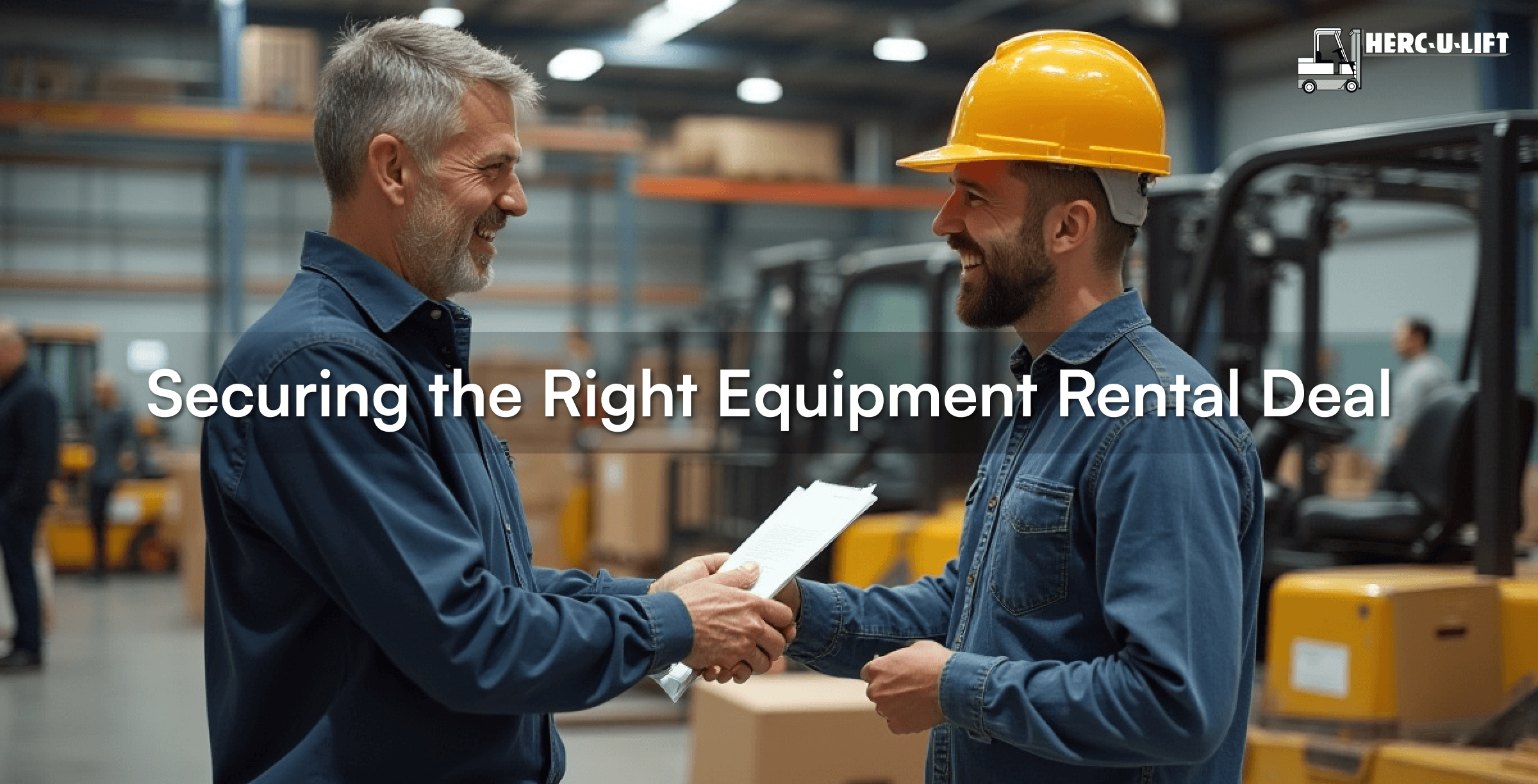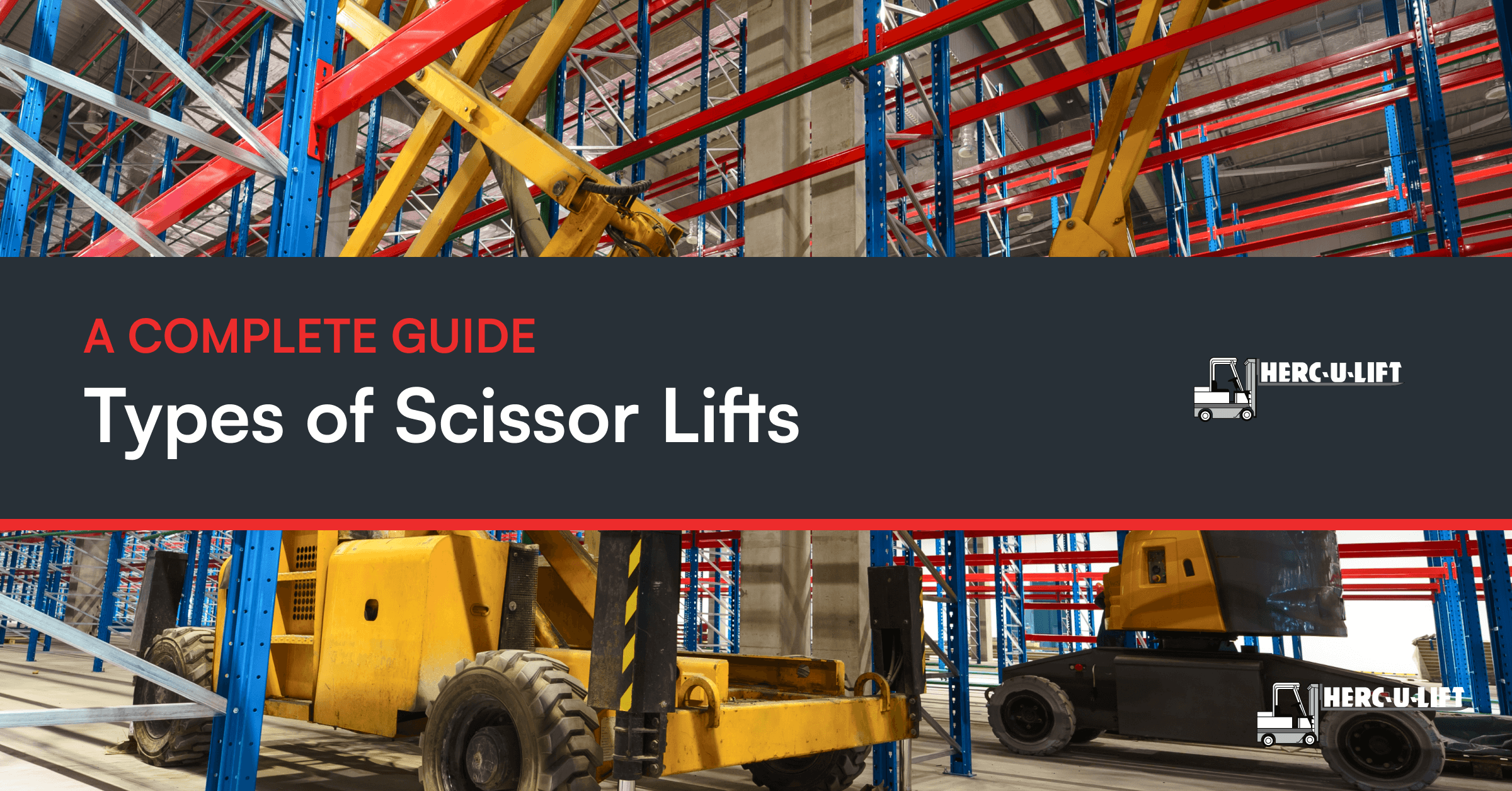On the surface, renting equipment for a job sounds simple. You start by figuring out what you need: a rough-terrain forklift for an uneven site, a scissor lift for elevated work, or maybe a mobile crane for some heavy lifting. Next, you proceed to sign the required paperwork.
However, that “simple” contract can have a huge impact on your project’s budget, schedule, and even safety.
In fact, the equipment rental agreement is more than permission to use a machine. It’s a binding document that lays out the ground rules for both the renter and
heavy equipment rental provider. It specifies who’s responsible for what and how problems will be handled. Skim it and you risk walking into surprise charges, costly delays, or even compliance trouble.
Safety and timing are non-negotiable for most jobsites. An overlooked clause can derail everything. That said, contractors, project managers, and business owners should treat the rental agreement as a key component of project planning.
In this guide, we explore what rental agreements really are. We go beyond surface-level tips and dig deep into the subtle language, hidden expectations, and real-world logistics that can shape how those terms actually play out once the equipment is on site.
The Framework of a Rental Agreement: More Than Meets the Eye
Most equipment rental contracts follow a familiar structure. They usually include sections labeled Rental Duration, Usage Terms, Fees, and Return Policy. They may look like boilerplate language at first glance. But make no mistake about it: the fine print is where the real responsibilities are hidden.
Take maintenance, for example. Some agreements require daily inspections, such as checking fluids, monitoring tire wear, and keeping filters clean. Others may even require you to do documentation for each step. Miss a check or forget to log it, and you could end up paying for repairs yourself.
Consider the following questions:
- How specific are the maintenance requirements?
- Do you need to perform daily inspections or only address visible problems?
- Will you have to document every check?
- What’s the process if something breaks?
- Can your crew handle minor repairs? Or do you have to stop work until the rental company sends a technician?
Liability is another key detail. If a lift tips and damages nearby structures, or a crane operator hits a power line, who’s covering the costs? The answer depends on exactly how your agreement assigns responsibility and how that lines up with your insurance. One wrong move here and you risk a breach of contract with serious financial consequences.
IInsurance Requirements: Not All Policies Are Created Equal
Nearly every rental company will want proof of insurance before handing over equipment. Liability insurance protects you against third-party claims for injury or damage.
Take note, however, that many contracts also demand equipment insurance to protect rented machinery from theft, vandalism, or accidental destruction. Some even go further, making renters fully financially responsible for any damage or loss, regardless of fault.
Paying attention to this detail is important, especially if you’re working on a congested urban jobsite, around sensitive infrastructure, or on remote sites where the risks (and replacement costs) are higher. A forklift rental, for example, is often used in tight areas. So verify insurance requirements ahead of time. It’s essential for ensuring full compliance and avoiding costly surprises later.
The Illusion of Safety: Misunderstanding Damage Waivers
Damage waivers and “limited liability” coverage sound reassuring. The fact is: they often come with restrictions. They might only cover accidental damage under certain conditions. Plus, they’ll likely exclude misuse, skipped maintenance, or operation outside the manufacturer’s guidelines.
As an example, using a scissor lift on a slope when the manual clearly says it must be level means the waiver probably won’t protect you.
Maintenance Obligations: Who Keeps It Running?
Don’t assume the rental company is handling maintenance during your rental period. Many agreements make the renter responsible for daily upkeep. This means you may have to check engine fluids daily, monitor tire wear, or keep filters clean. In some cases, renters are even required to document these maintenance tasks.
On government-funded projects, missing or incomplete documentation can lead to compliance issues and audit problems. Contractors may end up facing penalties, delays, or disqualification from future work.
For this reason, many project managers choose rental partners who offer fast, on-site service support. Ideally, the average response time should be under 2.5 hours. This helps keep downtime to a minimum.
Hidden Fees: What You Don’t See Can Hurt You
It’s not unusual to get an invoice that’s higher than expected. Some fees are often buried in the agreement, including environmental surcharges, cleaning costs, fuel markups, or late-return penalties.
Furthermore, even billing methods can trip you up. Some companies charge based on usage hours. Heavy operation over a few days might cost more than light use over a week.
Fuel Terms: Refueling Isn’t Always Straightforward
Similar to rental cars, most agreements expect equipment to be returned with a full tank of fuel. If you don’t, you’ll likely pay a hefty refueling charge. Those rates can be much higher than what you’d pay at a local supplier, especially if you operate on remote sites where fuel access is limited.
Cancellation Policies: Flexibility Isn’t Guaranteed
Schedules shift. Permits stall. Weather interferes. And sometimes, job scopes change. Knowing how your agreement handles cancellations can make a big difference.
Some providers let you cancel without penalty if you give them enough notice (often 24–48 hours). However, others will hit you with a fee that can eat a big chunk of your budget. For weather-dependent trades like roofing, a rigid cancellation policy can be a deal-breaker.
The DIY Factor: Homeowners and Risk Exposure
Homeowners tackling large projects (such as roof replacement) may prefer renting equipment instead of hiring professionals. While this idea may seem like a money-saver, it introduces another layer of complexity.
Most rental agreements are written with professionals in mind. Also, they assume you have the training, insurance, and awareness of safety rules to operate the equipment. Without those, you could violate the agreement, void insurance coverage, and put yourself at serious risk.
Simply put, operating a
boom lift without understanding terrain load limits or powerline clearance is not a good idea. Even a scissor lift rental (commonly chosen for gutter repairs or solar panel installation) can pose safety and liability issues if misused or operated without proper site evaluation.
Pre-Use Inspection: Protecting Yourself from Disputes
Before you accept any rental equipment, inspect it thoroughly with the rental rep present. Take dated photos of every dent, scratch, or leak, and compare your notes with theirs. Make sure both of you sign off on the condition before the machine leaves their yard.
If something goes wrong later, this could save you from paying for pre-existing damage. If the lift you rented later fails and causes damage, proper inspection documentation could prove the fault isn’t yours.
Regulations and Operator Credentials: Compliance Is Key
Depending on your location, operating certain equipment without the right certification can void your rental. Local and federal regulations may require OSHA training, operator cards, or machine-specific certification.
In particular, publicly funded projects often mandate proof of compliance. Renting a
telehandler or aerial lift without it can lead to fines, contract breaches, or even site shutdowns.
Support Access and Emergency Response
Some rental companies offer 24/7 support, emergency replacements, or fast on-site service. Others leave you waiting until the next business day.
If you’re mid-project and an important piece of equipment fails, after-hours support can be the difference between staying on schedule or not. Every hour lost can lead to increased labor costs, project penalties, and even structural exposure to bad weather.
Conclusion: The Contract as a Safeguard, Not Just a Signature
A rental agreement isn’t just extra paperwork. It can be your safety net. Whether you’re managing a residential job or a massive public works project, investing time to scrutinize the rental contract can save you time and resources down the line. So don’t let boilerplate language lull you into complacency. Read it carefully. Ask difficult questions.
The best time to clarify responsibilities, costs, and “what if” scenarios is before the equipment arrives. Not when you’re already on site and the clock is ticking.



 →
→

